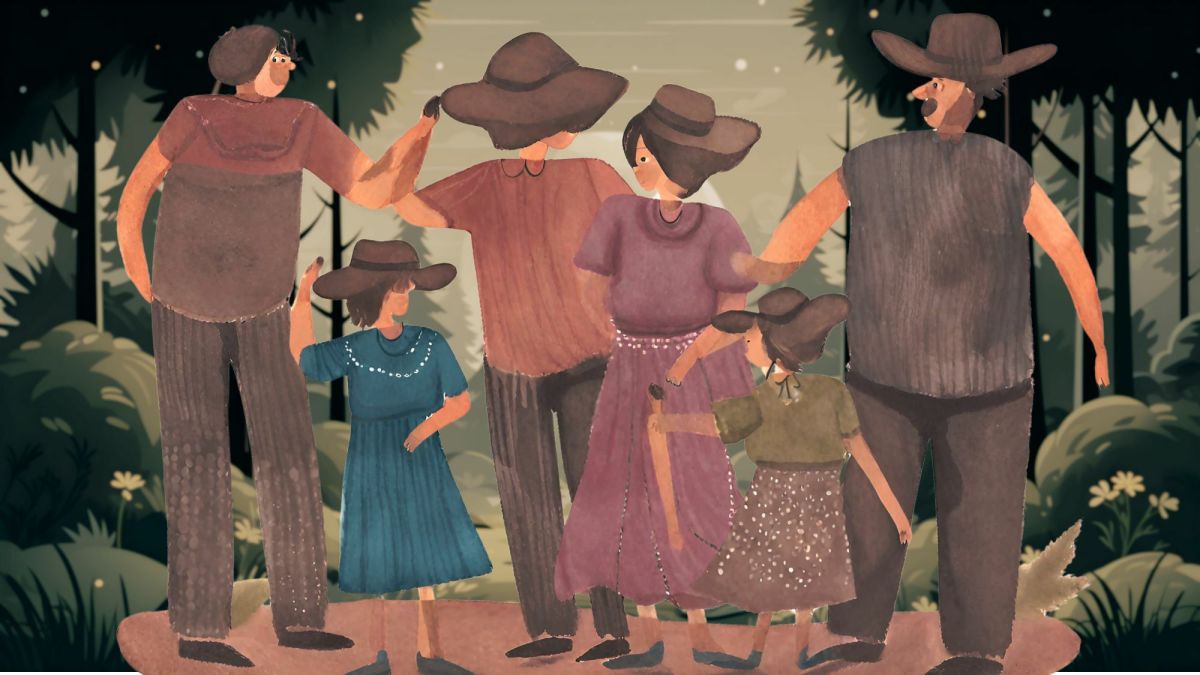Adult Play Theory
Many adults have either forgotten how to play, or have put the child part of themselves into a closet and have not genuinely played in years. For even more adults, the concept of play is restricted to the traditional activities of play, such games ranging from checkers to the latest electronic game system. The fact that sex is play, strangely, is a foreign idea to many adults. For some adults, speaking about sex as play triggers the taboo concerning children and sex, since children, by nature, are most often associated with the word ‘play’
Several common .concepts of play theory are easily adapted to the adult sexual play realm. Anyone can recognize that in the course of shared sexual expression, there is a strong element of entrancement, escalation, and absorption in the sexual activity. These elements are essentially three basic elements of play. In observing children at play, every parent has had the experience of having to work fairly hard to get the child’s attention when the child is engaged deeply in a game with their peers, for example. In addition, the joy adults feel when they hear the loud and pleasant voices of children at play is proof of the natural effect of escalation of play.
While play can be a solo amusement, it becomes truly full when shared. Good play can be spontaneous, or it can be elicited by invitation. This is easy to observe when two or more children join together; spontaneous play usually begins because both children intuitively understand the other has some kind of play skills. Invitation to play can be either overt, as in a child asking another to play a specific game, or it can be invitation by seduction. In children, of course, this play seduction is not to be understood as sexual of course. Just watch a child arrive late to a group of children playing, and you will see one or two children glance at the new child to the group, and make very subtle non-verbal gestures to invite them to play.
Spontaneous or invited sexual play is often a major source of difficulties with sexual partners. Each may prefer spontaneous or invited play, and ensuing arguments over who’s job it is to initiate, or how one partner is never ‘up for a quickie’ are common. Those adults who have firmly entrenched ideas that sexual play should always be spontaneous miss the truth that play (even children’s play) is hard work, and may take planning to be effective or satisfying. Those adults who insist on always planning (“Oh, its Saturday night again.”) miss the joy and novel intensity that spontaneous sex can afford.
Perhaps the most entrancing and absorbing play may be play that is highly novel. In human beings, novelty piques interest and offers some challenge to experience something new. The children’s toy industry is driven by the concept of novelty in play; one only need to try and keep up with all of the new video gaming systems that come out several times a year to appreciate this idea.
‘New’ in play, especially sexual play, is often a premium in adult relationship. Adults who lose touch with the playful child (that still hopefully lives with in them) begin to suffer from sexual routine for a variety of reasons that can include simply repeating what works (kiss here, there and touch there, sigh and then snore), time and energy constraints, or deeper relationship issues in the partnership.
Novelty in sexual play can also be restricted by one or both partner’s static view of their own sexuality and what sexual behaviors are ‘normal’ or ‘acceptable’. Should one partner step up to the boredom plate and make a suggestion for a novel type of sexual play, the other may become at least intimidated or shocked, and at worse, repulsed and rejecting. Either way, the playmate who proposed the novelty may, due to the reaction, stop pressing to explore play options. Typically, this then translates into other difficulties outside of the sexual arena.
Play, for children, as well as adults, is at its root a learning and developmental process. As such, there is a tendency for repetition in play, not just for practice, but for the sheer joy of doing a pleasurable activity ‘one more time’. Out of the repetition comes a greater self assurance and heightened skill level, as well as possible extensions and suggestions for adaptations of the play evolving into new forms of pleasurable activity. Too much repetition, though , makes the play terribly stale.
Play has a deeply creative aspect when it is not bound by a particular, strict, scripted rule set. This kind of fantasy play may contain with it quite divergent aspects, like the ‘cowboy’ who is playing ‘doctor’ with the ‘librarian’. Yet, even in this kind of lose and intensively creative play, there are boundaries and limits that are often intuitive and unspoken, but very real and containing. Creative play is more often observed between individuals who have been playmates for some time, and have developed the trust and intricate, subtle language of long time friends.
A large part of creative play such as this is ‘let’s pretend’, or role play. This area of play observed in children is taken for granted, but is often lacking in adult sexual play of many. Such play requires the suspension of reality; and while most adults can do this while watching a good movie, they often cannot do so in their sexual play for a variety of reasons, no the least of which, once again, is time and energy (as well as the children in the next room). In addition, role play may dance close to the edge of the darker, more aggressive (do not read ‘evil’ or ‘violent’, or ‘abusive’) tendencies in everyone’s sexual energy make up, and this may be at least uncomfortable for some, and frightening to others. Discovering that you get intensely excited by being spanked, or spanking your lover, to some, is startling and disquieting.
In most of the lackluster sexual play in many bedrooms there is one partner who plays the role of the ‘initiator’ more than half the time. Concepts such as exaggerating or reversing the natural roles of one partner playing the ‘leader’ and the other playing ‘follower’ may be intimidating to the couple. Exploration of this kind of play may be threatening, because it often directly connects with the roles that are played out in the relationship outside of the sexual arena. But, such exaggeration and role reversal are also key tools in good, satisfying play.
Role play quite naturally flows into playing ‘dress up’ with props and the employment of toys. While it might be guessed that ninety percent of women have at least one simple vibrator, this toy may be kept quite private by the woman, and never shared in play with her partner, lest her partner be insulted or be made to feel insecure. If the playmates are able to integrate a strong sense of play into their sexual repertoire, toys, props, and ‘dress-up’ become a natural extension. Those not used to props can warm up with the usually acceptable lingerie, best selected, at least at first, by her, and then her invitation to him to select and purchase a toy they both might enjoy. Like most children, once a taste for toys and dress up is gained, more dress up clothes and toys are often demanded!
The play theater, or play ground, in most cases, has a clear boundary and time limitation. Adult sexuality, at least for those who have children to care for, often becomes limited due to the children in the home, but also due to the ever present issues of time and energy. Over a period of time being constrained mostly to the same old boring bedroom, habit and routine can become entrenched. Expansion of the theater of play, like all aspects of play, takes work and preparation. Outdoor play, or play in the car (no, not while driving!), play in different rooms of the home, or play in novel weekend-away or vacation spots are all wonderfully novel play grounds.
As parents, adults likely have full collections of video tapes of the children at play. Most children enjoy seeing themselves on the television, and this constitutes a ‘performance’ aspect of good play. There is a exhibitionistic streak in most people; we want to be watched and appreciated for things we do well. That same camera could be a wonderful technical tool for adult sexual play
One large grouping of play is activity that has a competitive edge; this usually includes the ‘game’ concept, with stricter, explicit rules, and has more or less clear goal. In play that has stricter rules, some competition, and a stronger game element, one player may step forward to be the ‘leader’, while the other ‘follows’. As in all good play, fairness becomes fundamental, and the leadership role may be traded either during the particular game at hand, or another play session in the future.
Competition, with a tighter game structure in adult sexual play may be expressed through the trading of leadership between partners in setting up ever more pleasing, refined, or elaborate scenarios for sexual play. This might include planning a simple evening of indulgence, or an entire weekend away with out the children.
Adults may not only feel uncomfortable, silly, or unbearably childish in relation to these play concepts, but may even have a deep seated fear of ‘losing themselves’ in the play. This is because play is an intimate activity; it is not only physically intimate, but it is emotionally, psychologically, intellectually, and even spiritually intimate.
Good sexual play moves the partners forward to where we began: into entrancement, escalation, and absorption. This movement towards a deeper intimacy can press an individual to begin to feel overwhelmed, and perhaps even out of control of the process of the unifying effect. This may produce a reflexive withdrawal of the individual, who is trying to preserve their own sense of individuality. Often, one partner is much more comfortable and ready to grow in their development of such intimate play that the other. In such cases, patience, persistence, extensive communication, and hard work will be needed to keep both partners on the playground.
The famous artist, Picasso, was once criticized by someone who told him that a painting he had just completed looked like a child had done it, to which Picasso replied: “It took me my whole life to learn to paint like a child.” Our adult play is a developmental process that is no less true; we need to regain the sense of play we had when we were children.









